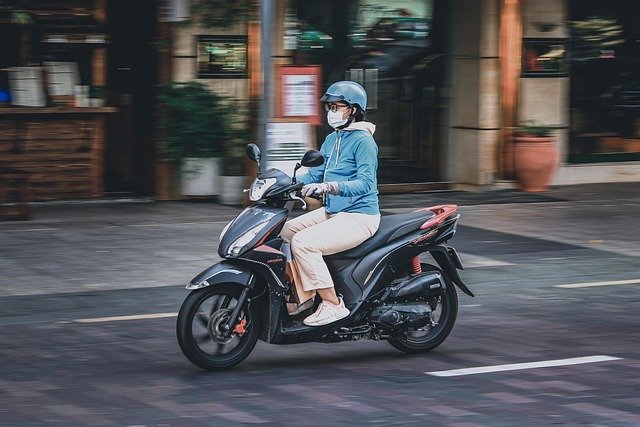Lightweight Folding Scooter: A Practical Guide to Compact, Portable Urban Mobility
Urban transportation continues to evolve, and lightweight folding scooters have emerged as practical solutions for modern commuters and city dwellers. These compact mobility devices combine convenience with functionality, offering an alternative to traditional transportation methods. Whether navigating crowded sidewalks, combining with public transit, or storing in small apartments, folding scooters address real challenges faced by urban residents seeking flexible, space-efficient travel options.

The rise of compact personal transportation has transformed how people move through cities. Lightweight folding scooters represent a practical intersection of portability, functionality, and urban-friendly design. Understanding their features, capabilities, and considerations helps riders make informed decisions about incorporating these devices into their daily routines.
Key Features and Specifications
Lightweight folding scooters typically weigh between 7 to 15 kilograms, making them manageable for most adults to carry when folded. Frame materials significantly impact both weight and durability, with aluminum alloy being the most common choice for balancing strength and portability. Carbon fiber models exist at premium price points, offering reduced weight but requiring careful handling.
Motor power in electric models ranges from 250 to 500 watts, with higher wattage providing better hill-climbing capability and acceleration. Battery capacity, measured in watt-hours, directly correlates with range and typically falls between 200Wh and 500Wh for portable models. Wheel sizes vary from 6 to 10 inches, with larger wheels providing better stability and smoother rides over uneven surfaces, while smaller wheels enhance portability.
Braking systems include electronic, mechanical disc, and foot brakes, with many models incorporating dual braking systems for enhanced safety. Display panels on electric models show speed, battery level, and distance traveled, providing essential ride information. Lighting systems, including front headlights and rear brake lights, improve visibility during low-light conditions.
Portability and Folding Mechanism
The folding mechanism defines a scooter’s practicality for multimodal commuting. Quick-release mechanisms allow folding in 3 to 10 seconds, depending on design complexity. Common folding styles include stem-to-deck folding, where the handlebar stem folds down onto the deck, and mid-stem folding, which reduces overall length while maintaining some height.
Folded dimensions typically measure 100 to 120 centimeters in length and 15 to 25 centimeters in width, fitting under desks, in car trunks, or alongside public transit seats. Carrying handles integrated into the frame facilitate transport when folded. Some models feature additional folding handlebars or removable batteries to further reduce size and weight.
Locking mechanisms secure the scooter in both folded and unfolded positions. Quality locking systems prevent accidental folding during rides and ensure stability when stored. Users should verify that locks engage fully before riding and that folding joints remain tight over time, as wear can affect both safety and portability.
Performance: Range, Speed, and Weight Limits
Electric folding scooters typically achieve speeds between 15 and 25 kilometers per hour, with speed limitations often regulated by local laws. Range varies considerably based on battery capacity, rider weight, terrain, and riding mode, with most models providing 15 to 40 kilometers per charge under optimal conditions. Real-world range often falls 20 to 30 percent below manufacturer specifications due to variable conditions.
Weight capacity limits generally range from 100 to 120 kilograms for standard models, though some reinforced designs accommodate up to 150 kilograms. Exceeding weight limits affects performance, range, and component longevity. Riders carrying backpacks or cargo should account for total combined weight.
Climbing ability depends on motor power and gearing, with most lightweight models handling inclines of 10 to 15 degrees comfortably. Steeper hills may require pedaling assistance on kick scooters or result in significantly reduced speed on electric models. Battery management systems regulate power delivery to prevent overheating and extend battery life, sometimes limiting performance on sustained climbs.
Acceleration modes allow riders to adjust power delivery, with eco modes extending range and sport modes providing maximum performance. Regenerative braking on some electric models recovers small amounts of energy during deceleration, marginally extending range while providing smoother braking.
Safety and Rider Comfort
Deck width and length affect stability and foot positioning comfort during rides. Wider decks, typically 15 to 20 centimeters, provide more stable footing but add weight. Non-slip surfaces with grip tape or textured coatings prevent foot slippage in wet conditions. Suspension systems, whether front, rear, or dual, absorb road vibrations and improve comfort on rough surfaces, though they add weight and complexity.
Handlebar height adjustability accommodates different rider heights, with adjustable stems ranging from 90 to 115 centimeters. Proper handlebar height, typically at waist to lower chest level, promotes comfortable posture and reduces fatigue during longer rides. Grip materials, including rubber and foam, affect comfort and control, especially during extended use.
Visibility features beyond lighting include reflective strips on decks and stems, increasing conspicuousness to other road users. Riders should wear helmets regardless of local requirements, as head injuries represent significant risks in falls or collisions. Protective gear including knee and elbow pads provides additional safety, particularly for new riders or those navigating challenging terrain.
Electronic safety features on advanced models include speed limiters, geofencing capabilities, and anti-theft alarms. Some scooters connect to smartphone apps for ride tracking, diagnostics, and remote locking functions.
Maintenance, Care, and Buying Considerations
Regular maintenance extends scooter lifespan and ensures safe operation. Tire pressure checks, relevant for pneumatic tires, should occur weekly, with recommended pressures typically between 35 and 50 PSI. Solid tires require no inflation but may need replacement when tread wears down or cracks appear. Brake adjustments maintain stopping power, with cable brakes requiring periodic tightening and disc brakes needing pad replacement after significant use.
Battery care significantly impacts longevity in electric models. Storing batteries at 40 to 60 percent charge during extended non-use periods, avoiding complete discharge cycles, and charging in moderate temperatures preserve capacity. Most lithium-ion batteries retain 70 to 80 percent capacity after 300 to 500 charge cycles, translating to 2 to 4 years of regular use.
Cleaning involves wiping down frames and decks with damp cloths, avoiding high-pressure water that might damage electrical components. Lubricating folding joints and moving parts every few months prevents corrosion and ensures smooth operation. Bolt tightness should be checked monthly, as vibrations can loosen connections over time.
When purchasing, buyers should consider intended use patterns, storage constraints, and local regulations. Testing folding mechanisms, verifying weight, and assessing build quality help identify suitable models. Warranty coverage, typically ranging from 6 months to 2 years, and availability of replacement parts indicate manufacturer support quality. Reading user reviews provides insights into real-world performance and common issues specific to models.
Buyers should verify that models comply with local electric mobility device regulations, which may restrict motor power, speed, and where devices can be legally operated. Some jurisdictions require registration, insurance, or operator age minimums for electric models.
Lightweight folding scooters offer practical urban mobility solutions when matched appropriately to user needs and environments. Understanding specifications, maintenance requirements, and safety considerations enables riders to maximize benefits while minimizing risks. As urban infrastructure continues adapting to personal electric vehicles, these compact devices will likely remain relevant options for flexible, efficient city transportation.




